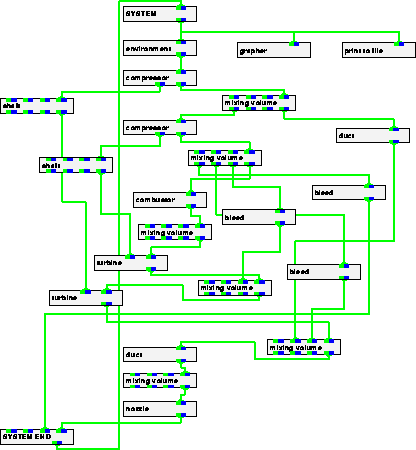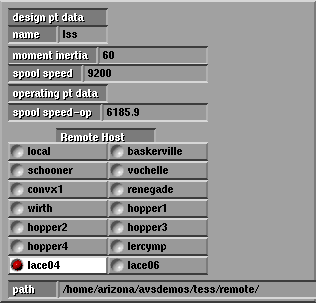 Schooner Collaborations
Schooner Collaborations Schooner Collaborations
Schooner CollaborationsThis project is an HPCC "Grand Challenge" application project funded by the National Science Foundation.

Note that a module in TESS can be used to represent more than
one component in the simulated engine, with the characteristics of each
instance determined by the dataflow connections to other engine components
and by values the user supplies through the widget mechanism supported
by AVS.
The widgets for the low-speed shaft module are shown below.
The top widgets are parameter values, while those on the bottom
allow the user to select the remote host to be used for that module
and to specify the executable on that host.

Since TESS modules have no side effects, users can also take advantage of Schooner's feature for moving components dynamically during execution. In particular, once the simulation has started, they can select a different host and Schooner will move the remote computation from the old host to the new host.
Schooner is also being used in the NPSS project to construct a prototype zooming application in which the one-dimensional TESS model is combined with a three-dimensional fan code. In this application, a monitoring and control system assists the user in controlling long-running simulations and gives assistance through an expert system that provides warnings and errors to the user. Eventually, the expert system will help in steering the execution of the simulation as well. The zooming project includes researchers in the Department of Mechanical Engineering at the University of Toledo and in the Industrial Engineering Department at Cleveland State University. An early version of the system was entered in the ``Heterogeneity Challenge'' at Supercomputing '94. The initial design of the system is described in Afjeh95.
 back to Schooner Project home page
back to Schooner Project home page